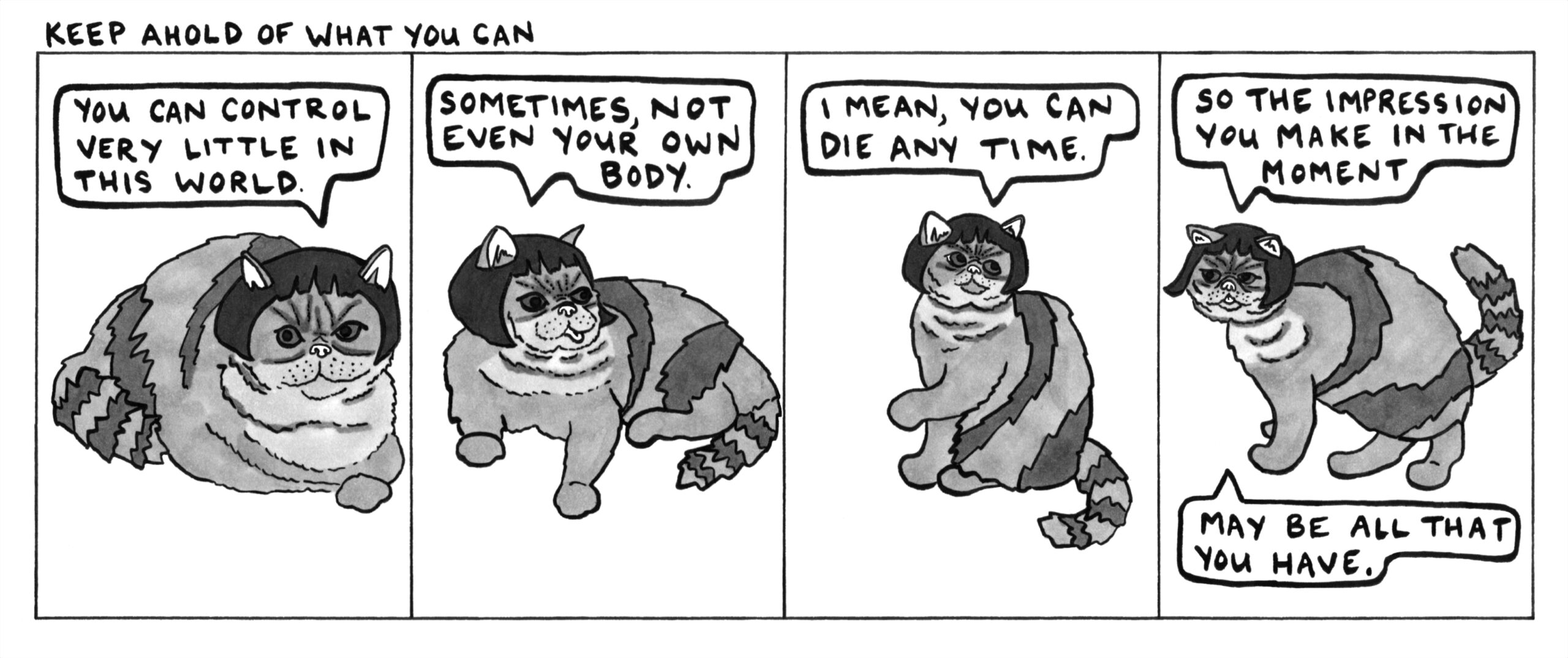I’ve been reading and listening to and watching a lot of spooky stories, given that it is that season, and given that, despite my cheerful shell, I have a fairly goth interior. There are the Jezebel Scary Stories, and the podcasts I listen to while exercising to get my heart rate up (ok, it’s actually to entertain myself, but I think these do both?), and the TV shows which are mediocre enough that I will not name them here, which are pushing me ever swifter towards a weeklong Hitchcock binge or something, just to cleanse the palate. (An exception: for fans of dark comedy and the absurd, this cat in a little wig is my homage to the owl in a little wig from the wonderfully bizarre Los Espookys.)
I read two novels recently, neither of which is scary in a traditional ghosts-or-murderers sense, but both of which are full of adrenaline. These books—Doris Lessing’s The Fifth Child and Rumaan Alam’s Leave the World Behind—are tight and unsettling, and both are effective in part due to how many of their opening pages they give over to the establishment of an incredible calm.
If you’ve studied fiction, you’ve no doubt come across the idea of the “ordinary world,” which is the beginning of Joseph Campbell’s “hero’s journey”—one possible structure for a piece of writing. (For those who aren’t familiar: the “ordinary world” is the thing the hero is lured away from, into adventure. Mundane reality, stability, maybe family, etc. A stable way of looking at the world and the self, which the adventure disrupts. Think Bilbo Baggins and his hobbit hole full of treats and brandy, before the dwarves come crashing in.) I’m not going to debate the merits of Joseph Campbell here, but I have always been intrigued by this idea of an “ordinary world” which is designed to be diverged from.
In both the novels I mentioned above (the Lessing & the Alam), we spend such a protracted time in the ordinary world that the reader is able to form their own attachment to it, even though the characters inhabiting that world are not without their problems and annoyances. (In fact, both books, by their conclusions, upend our understanding of that ordinary world’s merit and ethics, even while we yearn for its comforts.) I found myself really admiring the gambit of making me see people just be…kind of happy? And imbuing that with so much anxiety, by virtue of waiting for the other shoe to drop? I’m not sure this would work for me as well with pure realism, i.e. a book without some external, elevated conflict to be waiting for (if I was just waiting for a person to act badly, I think the good times would feel more irritatingly naive than deeply troubled and ominous, though I’m sure there are examples of that being done well, too).
It’s tempting to think of our own current situation as the bad break away from an ordinary world, the politics and the COVID outbreak and the police brutality just one dark turn from something placid and good. But of course, looking at the world that way requires us to consider, too, which elements of our peaceful past were the seeds of our own undoing. Which of the moral boards we walked upon were rotten? To what did we turn a blind eye?
In fiction, this structure is useful because it leads us willingly into dark times; in reality, we mostly only pay attention once the sun is gone. I don’t have a point here except to say that we can try to pay attention.
The sun, here in my city, is high. The weather report is optimistic. We are doing the work that we hope is necessary to survive.
